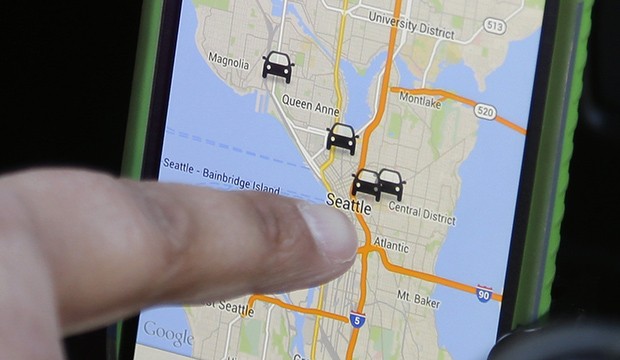
Share On Social!
Ridesharing transportation service applications (or “apps”) such as Uber and Lyft have revolutionized the way people connect and navigate the urban landscapes of the country. According to a study by the Center for American Progress, the apps have proven to be a great resource for many individuals without access to a vehicle or easy access to public transportation needed for employment, for medical care, for child care, or a multitude of any services and needs.
In 2014, more than 2,100 public transit operators provided 10.5 billion unlinked trips and carried passengers more than 57 billion miles. Nationwide, 20% of the households are below the poverty line lack access to a car. Latino households without a car are as high as 25%.
As a result of these findings, local leaders and policymakers have focused their attention toward the role that transportation—especially public transportation—plays in economic and social equity. Measures are created to improve the quality and access such as frequency and hours of service for transit providers. However, distance still becomes a factor. Transit riders are ultimately pedestrians in their commute to and from the transport hubs.
Shared-ride providers offer people the chance to hail a ride using smartphone or mobile device apps with prices based on the distance and overall location demand. Unlike a “traditional” taxi cab, riders are exclusively picked up through their mobile devices and are not subject to the whim and will of the driver.
Research has shown that access to affordable transportation is an essential part of moving out of poverty. A study by Raj Chetty, a professor of economics at Stanford University, found that geographic isolation (measured by the length of commute times) was a major reason why people were unable to leave poverty. Research also showed that public transportation improves access to employment.
However, many low-income households fall into geographic gaps between bus and rail lines and are largely excluded from the connections that public transportation offers. Latino families make up 29% of the low-income households in the U.S. The rapidly changing technology offered by the ride-sharing apps is closing the gap on social equity in many urban areas. While there still exist costs associated with them, having the capacity to go to work, attend regular medical appointments, and find childcare are all key steps in escaping poverty for many Americans.
Read more about the story here.
Share this story on Twitter: Ridesharing apps help close the social equity gap. #SaludAmerica http://salud.to/1WbydMc @SaludToday
Explore More:
Healthy Families & SchoolsBy The Numbers
142
Percent
Expected rise in Latino cancer cases in coming years



